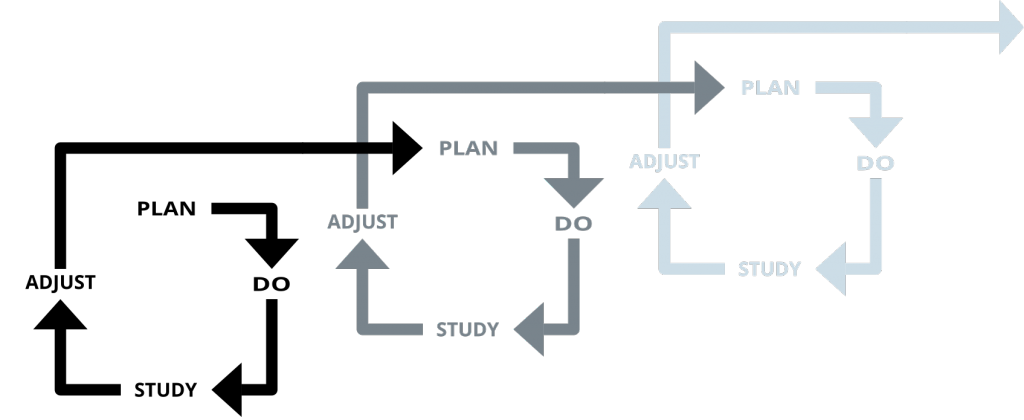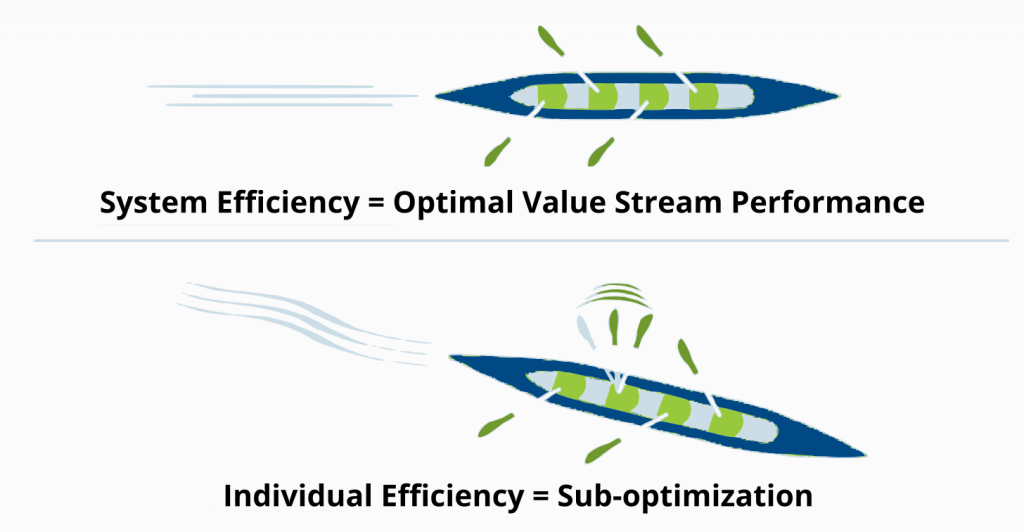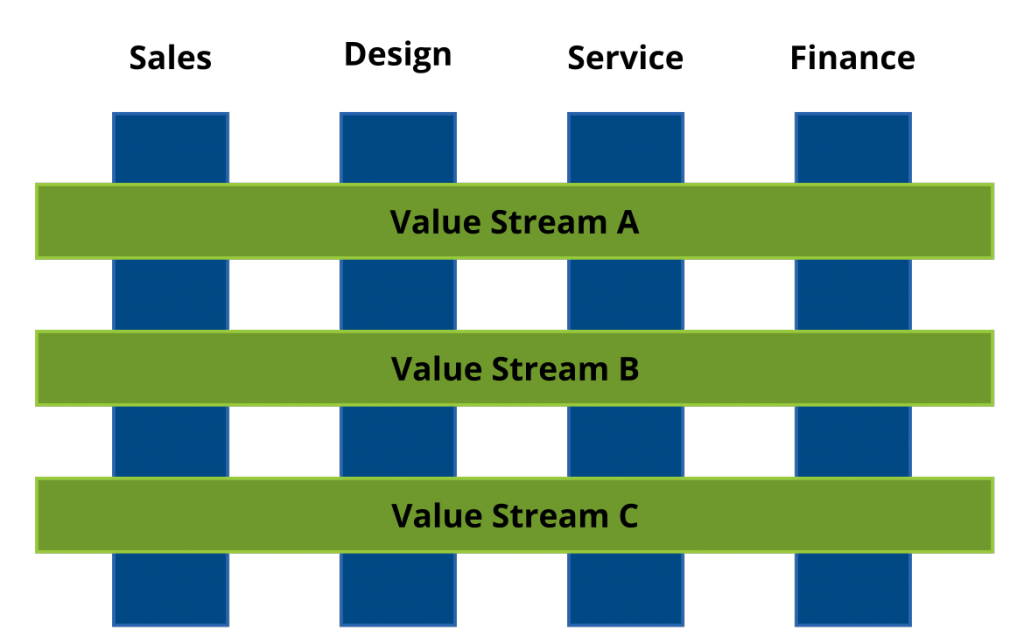One of the goals of every business is to attract new customers and keep the existing ones. Increasing customer satisfaction is a prerequisite for raising average customer value, or increasing revenue, especially in high-market markets such as the telecommunications market.
Business processes without added value create waste
In large companies, it is common for business processes to spend relatively large amounts of resources on topics that do not add value to the end product, or to the customer. Lean Management methodology calls these parts of business processes – waste or trash.

4 most common forms of waste
- The higher speed of the process than the required – a situation where business processes or some of their parts are carried out faster than necessary. At first glance, it may be illogical that something that is done too soon is called waste, but from a company perspective, which means more resource spending (hence a higher price) is an unnecessary speed that does not bring added value.
- On holds – in business process it is understood to occur some idling. The goal of every business process reengineering is to get rid of idling and optimize business processes in a way that there would be no waiting.
- Transfer – is a process by which the goods are further transferred and involves double management and excessive movement of goods which raises the overall price of the product.
- Mistakes – Any mistake correction implies an additional engagement and thus higher costs.
Continuous improvement is the foundation of all lean principles. The major is the one that, as much as improvements are achieved in one cycle, we must never stop improving. The Plan – Do – Study – Adjust cycle is continuously repeated and after implementing one set of improvements, we immediately start planning and analyzing for the next cycle.

What do I get with Lean Management?
Focus
By applying Lean Management, waste activity is reduced, enabling an employee to focus more on value added activities.
Improving productivity and efficiency
When employees focus on delivering value, they are automatically more productive and efficient because they do not waste time on unclear tasks.
A smarter process
By creating smart processes, you provide product service delivery only if there are real requirements, which means that you will better use your resources.
Costs reduction
When resources are spent based on real needs rather than estimates, then use just as much resources as you need.

Value Stream Maping – How to identify and remove waste?
Value Stream Mapping (VSM) – value flow mapping is a technique for analyzing the AS-IS current state and designing the TO-BE future state for a series of events or processes. The purpose of the VSM is to identify and remove or reduce waste. By removing waste, you increase productivity and create lean operations, which in turn makes it easier to identify waste and qualities.
VSM implies mapping the company’s operations, ie its business processes, into the value-added chain. When mapping, it is necessary to include all the processes and people that are part of the end product delivery to the customer. In this way, it is possible to determine which parts of the process do not yield value.
Applying the lean VSM principles becomes clear where value is generated and to what extent different parts of the process achieve or do not create value. After the VSM process you get insight into which processes are owned by the team and who is responsible for measuring, evaluating and improving this process. This great image lets you discover steps that do not bring value and their removal.
VSM further provides breakdown of silo within the organization. It is often the case, in large companies, that every organizational unit has a focus on its KPIs and does not take care of the broader image, or of its role in the company. As VSM focuses on the E2E process and does not know the constraints of organizational units, this technique provides the value-added tracking across the entire company.

Value Stream Walks provides constant process improvement
Value Stream Walks (VSW) –often referred to as Gemba Walks, is a very useful tool to implement continuous improvement. Value Stream Map is one of the ways of organizing VSW information collected.
5 steps to successful VSW
1. Get to know the concept
Gemba Walks have a broad context, but the most important is the meaning of the word gembutsu which in Japanese means a real place. The idea of Gemba/Value Stream Walk is to go where the process itself is going on. The goal is to avoid running business and designing business processes exclusively from the conference hall. To make the VSW successful, it must be carried out by a person who is ready to observe and collect as much information as possible.
2. Create a focus
Best practices show that the most effective approach is the one that focuses on solving one problem/challenge. To solve more problems/challenges you need to create more VSWs.
3. Walk the value with the right attitude
VSW requires a large employee engagement and efficient communication. Success requires an excellent relationship between those implementing VSWs and employees participating in the process that the VSW applies. To achieve this, the most important factor is respect. It is important to hear the participants in the process before setting out a series of questions. It is very important not to criticize process participants or to look for mistakes in the way they do their job, as this will lead to resistance and, ultimately, the worse outcome of the whole process.
4. Never stop
Kaizen means the principle of continuous improvement based on many techniques, including Gemba Walks. The purpose of using such techniques is to create adequate routines, attitudes and habits that will lead to continuous improvement throughout the life cycle of the process. This means that Gemba Walks is a technique to repeat because it is not enough to run it once or several times.
5. Use the information you have
One of the greatest challenges of VSW is to properly use what we learn during the process, or to implement improvements that are recognized as needed. The challenge is from all available information we have gathered and all the knowledge gathered about the process, to define solutions that can be implemented and used in practice.

VSW and VSM are the techniques used in reengineering business processes all over the world, in all industries (though they come from the manufacturing industry). The principles of continuous improvement have become a standard that ensures the realization of optimum effects in real time. Through the principle of constant repetitions, there is ensured an improvement of what has not been covered in the previous cycle as well as anything newly emerged from the last iteration.
Contact us and find out how using Lean Management and Value Stream Walks can optimize processes and improve your business.

Hrvoje Sukić
COO




